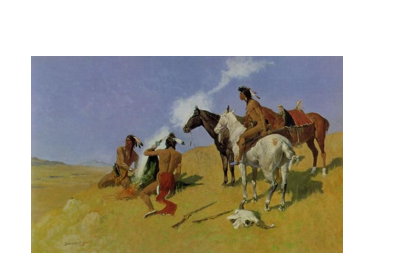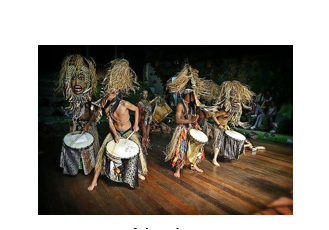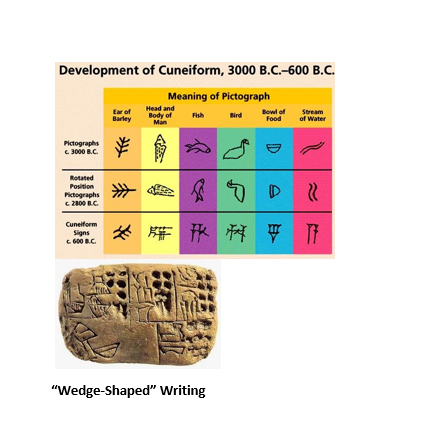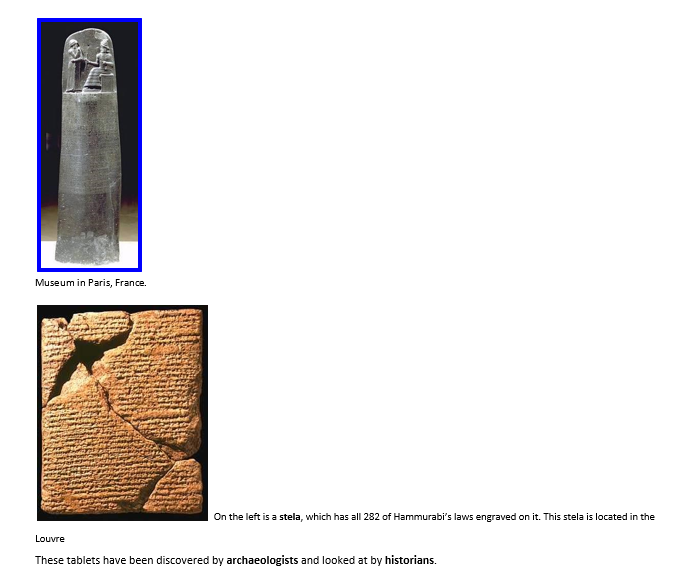Definition
This is a Two-way process of reaching mutual understanding, in which participants not only exchange information but also create and share ideas and messages.
Communication includes writing, talking and Non-verbal communication (facial expressions, body posture, or gestures.
Traditional forms of communication.
The methods of communication that were used in the traditional society included; Gestures
These are signals or body movements intended to pass a message. The person to whom the gesture is directed must know the meaning of the gesture.
It is sometimes referred to as sign language.(a combination of gestures that simulate actions or a sound)

Body language.
Sometimes gestures are used to enhance and emphasize speech. They are used where silence is required yet communication is vital like in operating theatres, and in traffic control.
Verbal communication-language.
This is the commonest form of communication among human beings involving the use of sound (spoken language) in combination with some gestures or alone, to express messages There are over 6000 distinct languages world today.
Signals.
The use plants on the roadsides, the shaving of hair, physical marks on one’s body or property are means through which communication is passed to others.
Fire and smoke signals.
Fire and smoke signals were used to send quick and urgent messages. Fire and smoke signals were coded such that strangers could not interpret the message correctly. They were commonly used in warning people of an impending danger.
The Jews used fire signals (torch light) to proclaim their feast days on mount Olives. Fire and smoke signals were always sent at night.

Advantages of using fire and smoke signals.
- Fire and smoke signals Conveyed messages faster than a messenger.
- Confidentiality of messages was upheld since the messages were coded and could not be interpreted by strangers.
- It was a cheap method of passing a message.
Disadvantages of fire and smoke signals
- Messages could not be sent over long distances.
- Ranges of messages passed were limited.
- It was restricted by weather conditions/smoke is useless in cloudy and misty days. It is difficult to set fire in wet conditions. Smoke could be blown by wind.
- It was of little use if no one was on the look out to see and interpret.
Drumbeats.
In drumbeating as a means of communication, each beat was coded for relaying different messages. For example there were different beats for ceremonies, announcing funerals, meetings, declaration of war, arrival of strangers and impending attack.
Once the initial beat was heard, the other drummers could pick up the beat in different areas thus spreading the message very quickly.

Advantages of drumbeating.
- Drumbeats could relay a wide range of messages-different beats could convey different messages. E.g. death, danger, festivities.
- In most cases drum beating could be used at any time both day and night whereas smoke signals could only be used during the day.
- Drum beats relayed specific messages whereas smoke relayed general messages.
- Drum beats could be used all seasons whereas smoke signals could not be used during certain seasons e.g. when it is raining.“
- Drumbeats could convey messages over wide areas.
- Messages by drumbeat were conveyed faster compared to smoke signals.
The major disadvantage of drumbeats was that at times it was difficult to differentiate the beats and therefore, the message could not be clearly interpreted thus leading to confusion.
Horn blowing
They were used to make public announcements, summon warriors or invite people to an important meeting. This was done by specialists with different tones that passed different messages thus passing a wide range of massages.
Screams and cries
Screaming was effective mostly on hill or mountain tops because of echoing. There were different ways of screaming in different situations.. Ululations signified feasting or good news like child birth.
Running messengers.
Sometimes there was use of trust worthy runners for very personal and urgent messages.
However the accuracy of the message delivered depended on the memory of the messenger.
An Athenian soldier, Phidippides, is remembered in history as a great messenger for covering great distance from Marathon to Athens. Unfortunately, he dropped dead shortly after arrival.
The Marathon race is named in his honour.
Messengers are still used to deliver messages today although there has been tremendous improvement after invention of writing.
Disadvantages of using messengers.
- Messages could not reach recipients on time since the messengers walked on foot to their destinations.
- Messengers sometimes forgot the message they were to deliver thus leading to inaccurate messages being passed.
- Information could be distorted in the process. Sometimes wrong messages were delivered.
- Messengers could be attacked on the way by wild animals.
- The distance to be covered by messengers was limited since they walked on foot. However this problem was overcome with improvements in forms of transport.
Written messages.
The oldest record of writing date back to about 5000years. Different communities use different symbols and alphabets to write messages. The messages were recorded on scrolls, stone tablets parchment (dried animal skin) or paper.
The earliest forms of wring were pictographic and ideographic. Examples of these were the cuneiform of Sumerians and Hieroglyphics of the Egyptians.
Cuneiform Writing

Scrolls
Scrolls are rolls of paper which were rolled around rods of wood or ivory for writing on. They were commonly used among the Egyptians, Romans, Asians, Jews, Greek, Hebrews, Chinese and Japanese.
Papyrus Reeds along the Nile were used for making writing material. Pens and brushes were also made from the reeds and the hard part of a feather.
The Hebrews used scrolls for their sacred writings.
Stone Tablets.
The Sumerians wrote on clay tablets. Writing was done on wet clay which, after drying, hardened like a stone and left a permanent impression.. for example, Hammurabi the law giver wrote his laws on stone pillars for all to read and obey. The Ten Commandments were also written on stone tablets.

Advantages of written messages.
- They provided reliable information that was not easily forgotten.
- Information was stored in that form for future reference.
- Information could be interpreted into different languages so that it could be accessible to many.
- The message in most cases was accurate.
- They were only limited to literate people.
- At times the information could be biased depending on the writers’ orientation.
- Written messages were open to misinterpretation.
Modern means of communication.
Numerous modes of communication have been evolved over time since the time primitive speech was the main means of communication. The modern means of communication include telephone, radio, television, video, cinema, telegraph, telex, electronic mail. Pager etc. The methods are categorized into telecommunications and print media.
Telecommunications.
This is a term that describes the technology of receiving and sending messages by telephone, radio, television, telegraph, telex, facsimile or e-mail. The message can be verbal, written or pictorial.
There are a wide range of devices in telecommunication through which messages can be sent in a variety of ways. For example.
Telephone.
This a communication device which is used to relay sound waves by converting them into electrical signals and then reconverting them into sound waves. Telephones carry sound over a distance using electric current.
The history of the invention of telephones starts with the success of a Scottish-born American inventor, teaching speech to deaf children in Boston Massachusetts, Alexander Graham Bell, who built an experimental telegraph which broke down after one day. Bell constructed a transmitter and a receiver for which he received a patent on March 7, 1876. Assisted by Thomas Watson, he discovered that voice can be sent using wires.
Later, Almon Brown Strowger of Kansas City, Missouri, invented the first automatic telephone exchange using electromagnetic switchboard (Strowger Switches) in 1897.
By 1900, long distance service was possible through the use of repeaters (electromagnetic devices placed along the route of the call) which amplified and repeated conversations into the long distance instrument.
Radio transmission later replaced underground and submarine cables for long distance transmission.
In 1877, Graham Bell opened the Bell Telephone Company. In 1900, it was sold to the American
Telephone and Telegraph Company (AT&T)
In Kenya, telephone communication was introduced in 1908 and has grown tremendously Cellphones.
A cellular telephony is a type of wireless communication which uses many base stations to divide a service area into multiple cells
The concept of cellular phones began in 1947 when researchers looked at the crude mobile car phones and realized that by using small cells with frequency reuse, they could increase the traffic capacity of mobile phones
Dr Martin Cooper, a former general manager of the systems division at Motorola is considered the inventor of the first modern portable handset. Which he used for the first time in April 1973.
The development of mobile telephony technology was slow in the earlier periods due to the hindrance by the strict federal regulations in USA and Europe. In 1921, the USA mobile Radio began to operate
In June 1946, the first American Commercial mobile radio telephone service was introduced in Saint Louis, Missouri.
By 1950s, the first telephone equipped cars took to the roads in Stockholm.
In 1964, the Bell system introduced the mobile telephone service.
By 1982, commercial cellular phones were being used in the USA and Tokyo in Japan. By 1987, USA had over 1million cellular telephone subscribers.
Currently, there are many mobile manufacturing companies are now in operation. For example,
Nokia, Motorola Inc., Sony, Alcatel, Samsung, Sagem, Siemens, AG, and Sony Ericsson
There are also a number of mobile phone service providers. In Kenya, the main ones are
Safaricom, Airtel, Orange and Yu
Standard Features of cellphones
- They are used for making and receiving calls.
- All have a personal phone book.
- They all have the ability to send and receive SMS.
- They have the ability to store messages and display and record the telephone number of a caller.
The following features are not standard and vary from phone to phone.
- Calculator, clock and calendar.
- Access to the internet
- Digital camera capability
- A variety of ringtones
Limitations of cellphones.
- They may be prone to poor reception especially where they are reliant on internal antennas.
- Their use is dependent on the availability of electricity. The phone must be recharged after a number of days. In areas where accessibility to electricity is a problem, mobile phones may not be so much in use.
- The continuous use of mobile phones has raised fears of possible side effects of radioactive rays on human beings.
- Handsets are easily stolen due to their small size.
Television.
The a public broadcasting medium that uses a point to multipoint technology to broadcast to any use within the range of the transmitter
In 1855, the idea of a television was perceived but only came into use in 1922 when a Scot, Loggie Baird, showed how moving images could be transmitted by electromagnetic waves. In 1931, the cathode ray tube (CRT) was invented in USA. The CRT transforms beams of electrons into visible images on the screen. This led to development of modern television.
The first television broadcasting service was launched in 1936 by BBC.
I 1942, Baird invented the colour transmission.
In Kenya, broadcast television began after a television station was opened in 1970. This was the Voice of Kenya. Kenya was connected to worldwide television via Longonont Satellite Station in 1972.
In 1990, KTN, the second channel was introduced in Kenya
Cable Television.
Cable television, a commercial service that links televisions to a source of many different types of video programming using Coaxial cables, was introduced in Kenya in 1994. The television users with personal satellite dishes can access satellite programming directly without a cable installation.
Recently, the digital television (DTV) was invented. This is the transmission of audio and video of digital signals, in contrast to analog signals
Television is an important means of communication since it is an audio-visual device.
Its importance can be summarized as follows;
- It conveys news and information from all over the world more vividly than other means of communication such as radio.
- It is a source of entertainment as it shows music and drama programmes.
- It is a device that may be used in educational broadcasting. Some educational programmes are broadcast on television. For example, programmes that sensitize people on HIV and AIDS pandemic.
- It is used in commercial advertisement by manufacturers and companies thus enabling them to sell their products.
- It is the best means of transmitting ideas since it commands attention.
- It is a source of employment in the television stations.
- Television has enabled humankind to bridge the gap of real-time communication between different time zones in the world.
Disadvantages.
- TV can only be viewed where there is electricity. It is expensive to install solar panels in areas where there is no electricity. The car batteries that may be used require constant charging.
- Pornographic programmes have eroded cultural values, especially among the youth. Such programmes originate in the west and the youth want to imitate what they see.
- Watching violent programmes has created the culture of violence among the youth. For example, watching of wrestling and violent movies.
- Some advertisements encourage deviant behavior. For example, advertisements of alcohol and cigarettes.
- Watching television can sometimes become addictive in some homes thus limiting the time to participate in other activities.
Radio.
The invention of the radio was a significant development in the electronics industry. In 1864, an English mathematical physicist, clerk Maxwell (1831-1879) suggested that there was the existence of waves.
In 1888, a german, Heinrich Rudolph Hertz, (1857-94) demonstrated the existence of electromagnetic waves (vibrations) that travel through space, which were named after him.
These waves could be used in wireless communications.
In 1901, an Italian, Guglielmo Marconi (1874-1937) invented the radio and sent a radio transmission across the Atlantic from poldhu in Cornwall to Saint John, Newfoundland, Canada.
The radio gained prominence during the World War I as it was used to communicate.
The Marconi Company made the first radio broadcast in Britain in 1920.
The British Broadcasting Company (BBC) was set up in London in 1922.
Kenya’s Radio Broadcasts before independence depended on the BBC. The VOK began to air programmes after independence. In 1990, VOK changed its name o KBC
In 1995, the FM meter Band was launched thus leading to an increase in radio stations
Importance of radio.
- Radio is easy to access since people can afford to buy the device.
- News and information from the radio is quickly received throughout the country
- It can also be accessed by the illiterate people who can listen and understand the radio news if broadcast in the language they can understand.
- Radio is used to enhance communication in transport systems like motor vehicles, railway, ships and airplanes.
- Radios are sometimes used to broadcast educational programmes and important government communications on issues like health, agriculture and family planning.
- The radio is a source of entertainment. E.g through Music and drama programmes.
- Radio can be used by manufacturers and companies to advertise their products thus stimulating business.
- Radio communication has enhanced space exploration. Radio signals are used to communicate with space vehicles.
Telegraph
This is a device or process by which messages are passed over a distance, especially using radio signals or coded electrical signals.
Telegraph messages are sent by a code in which numbers, letters and punctuation marks are represented by a combination of dashes and dots.
The earliest code to be used was the Morse code which evolved into the international Morse code.
A message sent by a telegraph was called a telegram.
Radio invention made it possible for wireless telegraphy.
Samuel Morse (1791-1892) is credited for the invention of the electric telegraph. In 1837, Morse made the first crude telegraph and by 1844, he successfully sent a telegraph over line.
By 1845, the first public telegraph was operating between Washington and Baltimore.
In 1851, the first telegraph cable was laid under the English Channel between London and Paris.
In 1866, the Trans-Atlantic cable was established.
In 1872, most cities in the world were linked by telegraph.
Disadvantage.
~ Communication through the telegraph could be rendered unreliable where accidents and poor weather could cut telegraph cables.
Internet.
This is a computer-based global communication network system that links thousands of computers using telephone lines. Currently Mobile phones are also used in internet communication.
Internet forms one of the inexpensive and fastest communication means in the world today which has gained popularity..
Internet was introduced in the 1970s. Currently there are over 4000 million users of internet in the world today with its popularity being manifested in the social media networks like facebook, Twitter.
Results of internet.
- Education has been developed since research can be done on the internet.
- E-commerce can be done on the internet hence enhancing the sale of goods and services.
- The running of government operations can be done on the internet since the government may use it for internal communication, distribution of information and automated tax processing.
- Internet has led to expansion of Business as people use it to interact with other business people.
- Individuals use the internet to communicate through e-mail or other social network platforms such as facebook, Twitter, Skype, etc.
Electronic Mail. (E-mail)
This kind of communication is also reliant on internet. The communication is done using either computer or mobile phones with the help of a modem.
E-mails first came into widespread use in 1990s and has today become a major contributor to business development. It has taken the lead ahead of telephone, fax, radio and television in communication.
Facsimile transreceiver (fax)
This is a method of transmitting text over telephone network. A written, printed or pictorial document is scanned then sent and reproduced photographically at the destination. The message /picture is transmitted within 30 seconds
The Fax machine was developed by a german named Arthur Korn in 1902 and was commercialized in 1926.
Telex.
This is system of direct dial teleprinter which uses a keyboard to transmit typed text over telephone lines to similar terminals
Satellites.
A Satellite is a spacecraft or an artificial device orbiting the earth, moon or another planet, transmitting back to earth scientific information. It is launched at a velocity of atleast 28,960 km per hour (escape velocity) to enable it overcome gravitational pull of the earth and thus remain in space.
In 1680, a British Scientist, Isaac Newton, introduced the idea of artificial satellites.
The first message to be transmitted by satellite was the Christmas greeting by President Dwight D Eisenhower of the USA in 1958.
In 1969, the first television pictures were relayed around the earth by satellites from Apollo II astronauts.
In October 1957, USSR sent sputnik I, the first satellite into the orbit. In the same year, the first living passenger, a little dog called Laika, was carried into space by a satellite.
In 1961, a Russian Yuri Gagarin went into space on board of a satellite.
In 1969, an American, Neil Armstrong, in his spacecraft Apollo I, landed on the moon.
In 1981, the US released the first space shuttle which is manned, airplane like craft which orbits the earth.
In 1983, Challenger, the space shuttle, released a satellite into space.
In 1986, an accident occurred on the space shuttle, Challenger, killing seven Astronauts
Pagers/beepers
These are portable communication message devices. In using it, the person sending the message uses a phone and calls a pager number.
The impact of telecommunications today.
- Telecommunication has revolutionized communication through enabling faster and easier communication between individuals. This has increased interaction and therefore international understanding.
- Telecommunication has enhanced information management e.g the use of computers for information storage and processing and the internet in communication.
- Telecommunication devices are also sources of entertainment. Radios and television broadcast music and movies to entertain people.
- Telecommunication systems like television bring reality to the viewers by transmitting live pictures.
- Telecommunication devices enhance cultural exchange and understanding through showing programmes from other countries. This helps people to appreciate other people’s culture and even enrich their own.
- Telecommunication systems have promoted water and air transport. Ships at sea and airplanes use these devices to send signals to guide captains and pilots.
- Telecommunication systems have made world trade and businesses more effective and efficient. People can quickly place orders for goods and get news of world markets and commodity prices.
- Telecommunications has enabled organizations, government institutions and individuals to access information and programmes at their convenience. This has led to effective management and good governance.
- Countries have also improved their security systems by using radio and radio calls and mobile tracking systems to combat crimes.
- Modern war fare has been revolutionized. Modern weapons depend on telecommunication services that provide accurate and reliable information. For example, satellites are used to guide missiles.
- Remote areas are no longer inaccessible thanks to telecommunications. People can communicate using cellphones even from the most remote areas of a country.
- Telecommunication systems have promoted space exploration. Man has been able to send spacecraft to the moon, mars and Venus using communication satellites.
- Telecommunication is a source of employment in many countries. Many people offer services, operate systems and maintain them.
- Governments earn revenue from telecommunication systems. This revenue promotes economic development. For example taxes collected from licensing of service operators, manufacturers of telecommunication systems etc.
Negative attributes to telecommunication.
- Telecommunication has promoted international social crimes such as fraud, drug trafficking and terrorism.
- Some forms of telecommunication promote immorality among children and the youth in the world through watching of pornographic materials.
- Some telecommunication devices cannot be accessed by many people due to the expense of acquisition and installation.
- Telecommunication devices have an addictive effect for many users. This affects speed of development in developing countries AS people sit for long hours watching television instead of engaging in productive activities.
- Mobile phone users risk suffering from effects of the constant exposure to radioactive rays which may cause certain types of cancer.
Print media.
This refers to all that is printed or written down and published. For example, journals, books, newspapers, magazines etc.
Newspapers.
It is an unbound publication produced at regular intervals and devoted primarily to current events and advertisements
Before printing was invented, the oldest newspaper, The Siloam Inscription,(a stone on which news were recorded) was in circulation among the people of Mesopotamia at around 700 BC. The Chinese court journal, Tsing Pao, published in Peking in AD 500 was another early form of newspaper.
The Roman Bulletin, Acta Diurna, used by Emperor Julius Ceaser from 60BC to post government daily announcements was also an early form of newspaper.
Printing was invented by a german, Johannes Gutenberg, in the 15th century. The first publication, Strasbourg Relations, was published in 1609
The London Daily Post also known as the Public Advertiser was published by Henry Woodfall and his son Sampson Woodfall in 18th c.
The London Times was first published as the Daily Universal Register by John Walter in 1785. It changed its name to Times in 1788. In 1900, C Arthur founded the Daily Express.
The first newspaper in Kenya was the African Standard founded by Alibhai Mullas Jeevanjee, in Mombasa in 1902. It later changed its name to the east African standard in 1905. And moved its operations from Mombasa to Nairobi in 1910.in 1928, Jomo Kenyatta published a local newspaper in Kikuyu, Muigwithania aimed at spreading the views of the Kikuyu central Association and promote kikuyu culture.
The Daily Nation was established by the Aga Khan in 1960
In 1983, the Kenya Times was founded by Hilary Ngweno and later bought by KANU and owned jointly with a Briton Robert Maxwel
Types of Newspapers.
Daily Newspapers
These print atleast one edition every weekday. Some print morning and evening edition when necessary. Examples of daily newspapers include the Daily Nation, The standard, the Toronto Star and The Los Angeles Times.
Weekly Newspapers.
These are published once a week. They contain news of interest to people in a smaller area, maybe a city or a neighbourhood. For example the east African in Kenya and the weekly Telegraph in Britain.
Special interest Newspapers.
They concentrate on news of special interest to a particular group for example an ethnic community, a corporation or a trade organization. They can be daily, weekly or monthly.
Periodicals.
These are publications released at regular intervals and containing news, feature articles, poems, fictional stories etc. they also contain photographs and drawings. Periodicals aimed at general audience are called magazines
Periodicals differ from newspapers in that whereas newspapers deal with sometimes daily news and are unbound, periodicals like magazines and journals focus on more specialized material and deal with news in form of summaries or commentaries. They are printer on finer paper with smaller bound pages and issued at a longer interval than a day when compared to newspapers.
Magazines
These are periodical publications with specialized information on particular issues. They are published fortnightly, weekly or monthly
The oldest magazine is Eileen’s Oxford Gazette published in 1665, later became the London Gazette.
The first periodical to use the word magazine in its Title was the Gentleman Magazine published in 1731 in Britain.
The oldest magazine in Kenya is the Kenya Official Gazette (1900-1963), renamed the Kenya
Gazette after independence. Other were the Leader of the British East African Company,
Wathiomo Mukinyu by Consolata Catholic Missionaries in Nyeri, Tangaza by Harry Thuku, the East African Chronicles and the Colonial times by the Asians
Journals
These are periodicals with a narrower target audience such as scholarly publication. They specialize in particular themes or professions. For example the Review of Political Economy, Canadian Journal of African Affairs, the East African Journal of Social Sciences and the East African Medical Journal.
